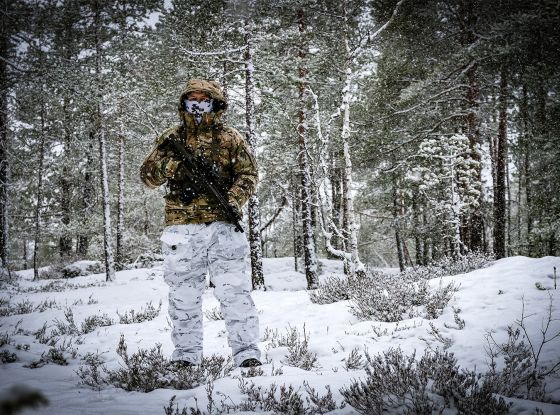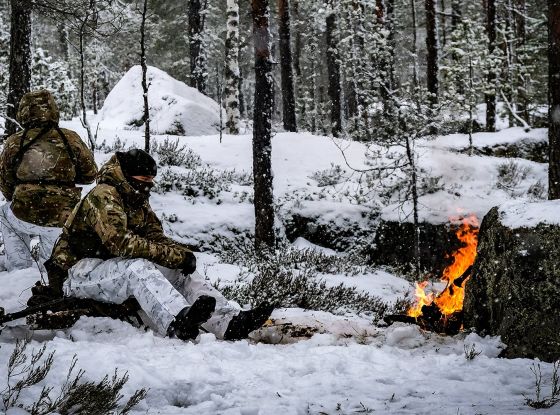In today’s fast-paced world, your safety depends on how well you can stay aware of your surroundings. Situational awareness is the key to spotting warning signs, interpreting them, and taking quick, effective action. Developing these skills empowers you to identify potential threats and make safer decisions.
In this blog post:
Whether commuting, walking through a crowded area, or simply relaxing, maintaining an awareness mindset can protect you from danger and enhance your confidence.
Understanding Situational Awareness
Situational awareness is a broad term that people use inappropriately. A more correct term is having an awareness mindset. Which involves all different sorts of awareness.
What we are talking about here is personal safety awareness. That can help with observing, interpreting, and anticipating your surroundings about safety issues. It involves being aware of your environment and using your senses to notice details.
Then, you make sense of what you see, hear, or feel and assess whether it might pose a threat.
Finally, you project what could happen next, decide how to respond, and act swiftly using the OODA Loop—Observe, Orient, Decide, Act.
Imagine a stranger acting suspiciously near you. You notice their body language, put it in context, interpret their behavior as unusual, and prepare to distance yourself or call for help. This proactive approach gives you control over the situation, protecting you from potential harm.
SUBSCRIBE TO UNLOCK OUR EXCLUSIVE CONTENT
Enter your email and get timely updates and relevant intel on tactical topics directly to your inbox.
You are signing up to receive updates via e-mail from which you can opt out at any time. Visit our privacy policy for more info.
Why Situational Awareness is Essential for Civilians
Your daily routine often exposes you to risks, even if you don’t realize it. Distractions like smartphones or headphones can make you unaware of warning signs, leaving you vulnerable. But situational awareness isn’t about living in fear. It’s about paying attention and staying prepared to enjoy life safely and confidently.

You can practice situational awareness skills in various settings:
At Home
- Observe changes in your environment.Notice unfamiliar people or vehicles near your home.
- Secure your space. Regularly inspect doors and windows for signs of tampering.
- Build awareness habits. Make it a routine to assess your surroundings, even during everyday tasks.
On the Street
- Decode body language.Watch for signs like fidgeting, lingering, or avoiding eye contact.
- Stay alert to routes. Identify alternate paths or exits in case of an emergency.
- Avoid distractions.Put your phone away and keep your senses engaged when walking.
In Transit
- Spot unusual behavior. Notice passengers acting nervously or unusually.
- Locate exits. Know where to go if you need to leave quickly.
- Drive attentively. Watch for erratic driving and stay ready to respond.

Building Situational Awareness Habits
Developing these habits ensures your responses are automatic when faced with a threat. Repeated practice trains your mind to stay alert without overthinking.
1. Observe and Interpret
Actively scan your surroundings for potential threats or irregularities. Look for exits, watch people’s movements, and notice anything unusual.
2. Decode Nonverbal Cues
Learn to read body language. Movements like pacing, avoiding eye contact, or following someone too closely can indicate trouble. Spot these signs early and act to avoid escalation.
3. Use the OODA Loop
This method helps you make rapid, effective decisions:
- Observe your surroundings.
- Orient yourself to risks.
- Decide what action to take.
- Act quickly to ensure your safety.
For example, if you suspect someone is following you, evaluate escape routes, choose the safest one, and move confidently to a secure area.

Mastering Levels of Situational Awareness
To stay ahead of threats, you need to master three levels of situational awareness:
- Perception: Notice the details in your environment, like a door left ajar or someone behaving oddly.
- Comprehension: Understand what these details mean in context. For example, a person standing near a car with no apparent purpose might indicate an attempted break-in.
- Projection: Anticipate what might happen next and plan how to respond effectively.
Mastering these levels helps you handle high-pressure situations with clarity and confidence.
Practical Tips to Enhance Your Safety
Use these strategies to put situational awareness training into practice:
- Minimize distractions. Keep your phone and earbuds away in risky areas to maintain focus.
- Blend in. Avoid drawing attention to yourself with flashy accessories or behavior.
- Trust your intuition. If something feels off, act on it immediately—your instincts are often correct.
- Choose safe routes. Stick to well-lit, busy paths and avoid isolated shortcuts.
Overcoming Challenges to Situational Awareness
Stress, fatigue, and complacency can reduce your ability to stay alert. Combat these factors by practicing mindfulness, staying physically and mentally healthy, and taking breaks when needed. Your ability to observe and interpret effectively improves when you’re well-rested and focused.
Situational awareness also benefits you in other areas of life:
- At work: Stay alert to avoid accidents and make better decisions.
- In law enforcement: Sharpen your ability to evaluate and respond to threats.
- In daily life: Increase your confidence and personal safety.
Final Thoughts
Your safety starts with staying aware of your surroundings. By recognizing warning signs, observing body language, and applying frameworks like the OODA Loop, you can stay prepared and confident in any situation. These situational awareness skills not only protect you but also enhance your decision-making and leadership abilities.
As you practice these habits, you’ll develop a deeper understanding of your environment, spotting subtle details and anticipating risks. With time, you’ll feel more secure and empowered, improving not only your personal safety but also your quality of life.




